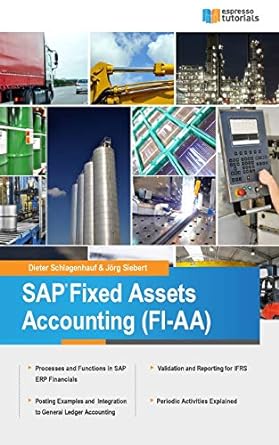Answered step by step
Verified Expert Solution
Question
1 Approved Answer
uantity A 1 Break-Even Analysis 7 Enter data only in yellow cells. 3 4 Profitability Analysis 6 7 Cost B C D OCengage Learning. Not
uantity A 1 Break-Even Analysis 7 Enter data only in yellow cells. 3 4 Profitability Analysis 6 7 Cost B C D OCengage Learning. Not for commercial use. E F G H Outsourcing Decision Technology Choice Decision 10,000 Quantity 12,000 Quantity 11,000 Produce In-House Option A 8 9 Fixed cost Unit cost $100,000.00 $12.00 Fixed cost $250,000.00 Unit cost $20.00 Fixed cost Unit cost $200,000.00 $18.60 10 11 Outsource Option B 12 Revenue Fixed cost 13 Unit revenue $20.00 Unit cost $35.00 Fixed cost Unit cost $100,000.00 $21.00 14 15 Total Cost $220,000.00 16 17 18 Total Revenue Net Profit Profit or Loss $200,000.00 $20,000.00 Total In-House Production Cost $490,000.00 Total Outsourced Cost $420,000.00 Total Cost Option A Total Cost Option B 5404,600.00 $331,000.00 Cost difference (In-House-Outsourced) Loss Economical Decision $70,000.00 Outsource Cost difference (Option A- Option B) Economical Decision $73,600.00 Option B 19 Spreadsheet Samoset Fans, Inc. manufacturers its fan blades in-house. The owner, Betty Dice, doesn't outsource any fan parts except fan motors all other fans parts are made in-house. Their current process and its equipment are getting old. Maintenance and repair costs are increasing at ten percent per year. She and her company team are evaluating two new processes. The first process has an annual fixed cost of $740,000 and a variable cost of $15 per fan blade. The second process is more automated and requires an annual fixed cost of $1,000,000 and a variable cost of $13 per fan blade. The internal transfer cost of a fan blade is $19, and this helps the firm determine the total manufactured cost of a completed fan. Use the Excel template Break-Even in MindTap to answer the following questions: a. What is the break-even quantity between these two processes? Round your answer to the nearest whole number. fan blades b. If predicted demand for next year is 100,000 blades, what process do you recommend? Round your answers to the nearest dollar. Total cost of Process A: $ Total cost of Process B: $ So, -Select- is recommended. What is the cost savings? Round your answer to the nearest dollar. $ c. What volume of demand does Samoset Fans, Inc need to make an internal profit on fan blades of $160,000, assuming they installed the process you recommend in part (b)? Round your answer to the nearest whole number. fan blades
Step by Step Solution
There are 3 Steps involved in it
Step: 1

Get Instant Access to Expert-Tailored Solutions
See step-by-step solutions with expert insights and AI powered tools for academic success
Step: 2

Step: 3

Ace Your Homework with AI
Get the answers you need in no time with our AI-driven, step-by-step assistance
Get Started


